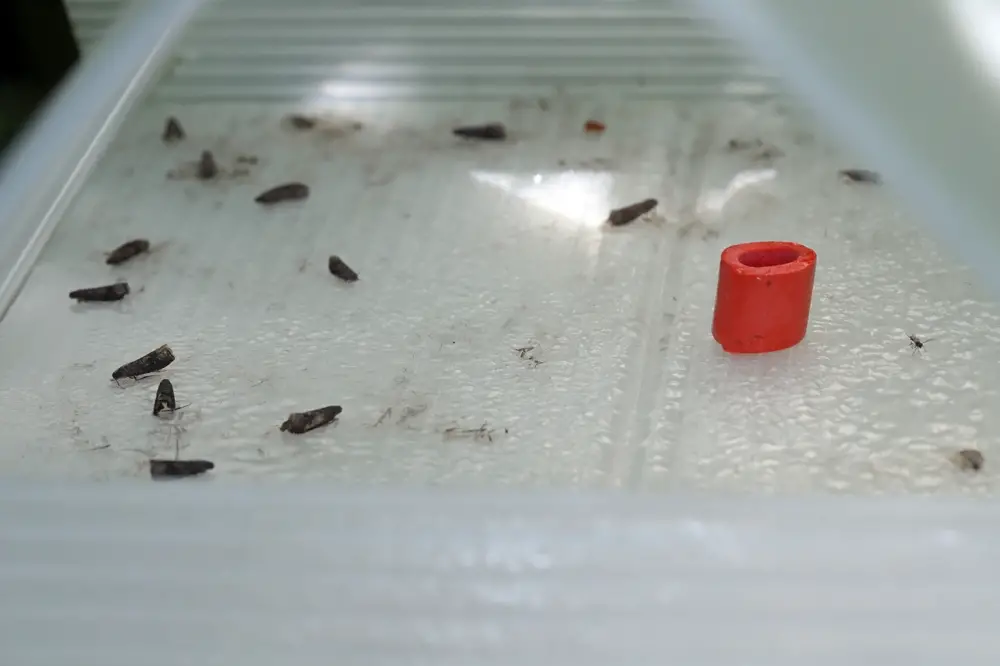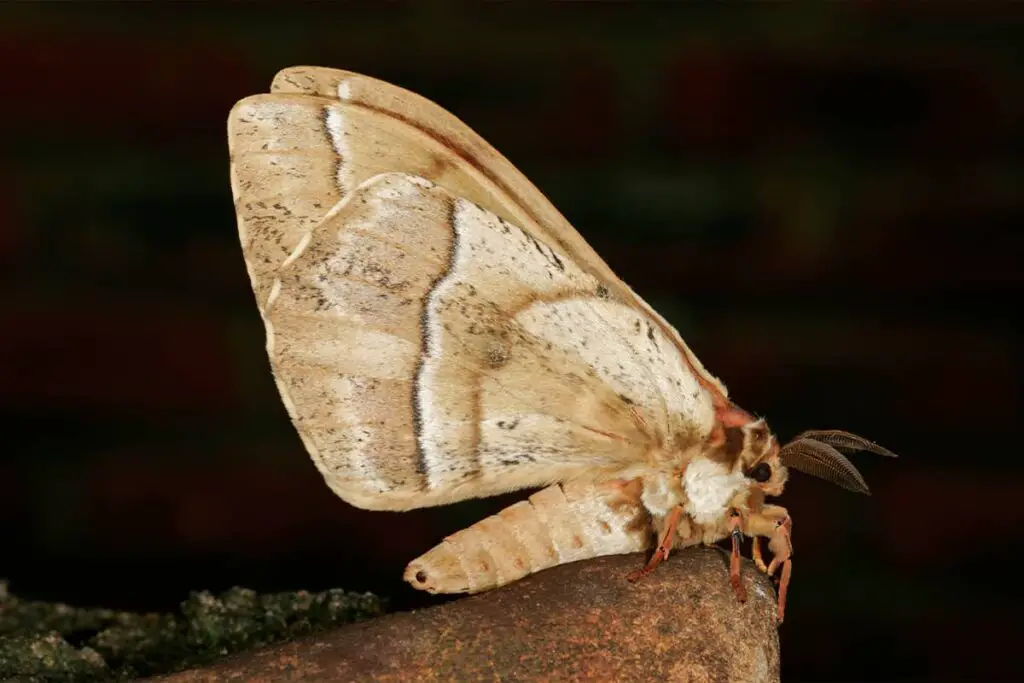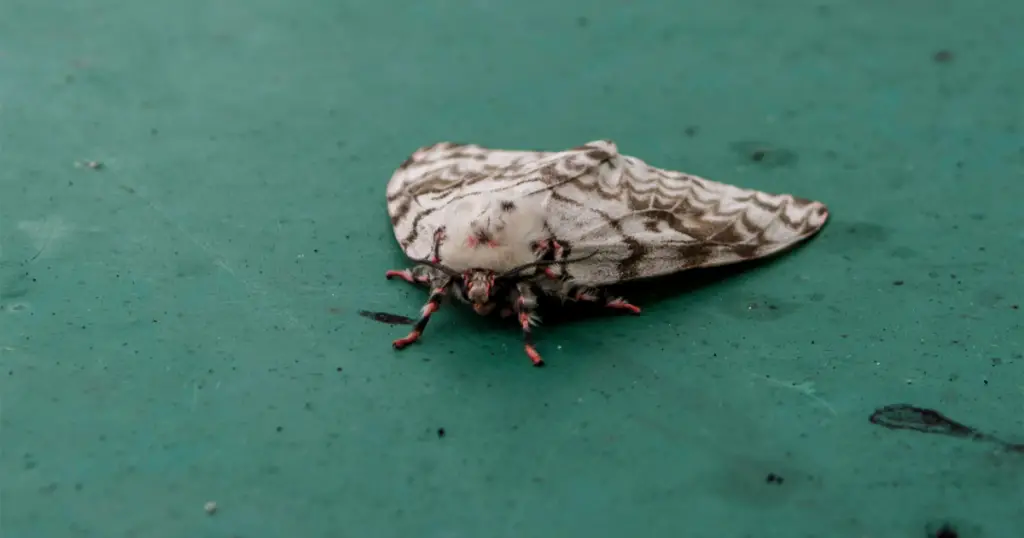Do you ever wonder what moths eat? Most people don’t give moths a second thought, but they are fascinating creatures.
Moths come in all shapes and sizes, and they can be found all over the world.
This blog post will take a closer look at these fascinating insects and learn more about what adult moths eat.
What Do Moths Eat?
Most people think of adult moths as nothing more than nuisances, attracted to light sources in homes and businesses.
While it’s true that moths are indeed attracted to light, there is much more to these fascinating creatures.
For instance, did you know that moths play an essential role in the ecosystem?
Many species of moths are vital pollinators and are an essential food source for various animals, including bats, frogs, lizards, and birds.
So what do moths eat?
The answer may surprise you.
Moths are primarily herbivores, feeding on a variety of plant life. Some species of moths will only eat a specific type of plant, while others are generalists and provide a wide range of plants.
Many moths are attracted to flower nectar and play an essential role in pollination. Some moths will also feed on the leaves of trees and shrubs.
A few species of moths are known to be predators, and they will feast on small insects or even spiders. Despite what they eat, moths play a vital role in the ecosystem.
So the next time you see one fluttering around your porch light, take a moment to appreciate these exciting creatures.
Moth Anatomy Explained
An adult moth species is a winged creature that flutters about at night, attracted to lights. They are often confused with butterflies, but their anatomy has some critical differences.
For instance, moths have bigger bodies and shorter wings than butterflies. They also have a set of specialized mouthparts known as proboscis, which they use to siphon nectar from flowers.
In addition, moths typically have duller colouring than butterflies, and their wings are covered in tiny scales. These scales help the moth to fly at night by reflecting light, allowing them to navigate in the dark.
While most people think of moths as pests, they play an essential role in the ecosystem as pollinators.
By visiting flowers in search of nectar, they help spread pollen and ensure the continued reproduction of plants.
How To Attract Moths?

The best way to attract moths is by providing them with a good food source and shelter. Many moth species are attracted to light, so placing a lamp near your garden can help bring them in.
You can also try setting up a small water dish to provide them with a water source. Moths are attracted to various plants, so planting an array of flowers, shrubs, and trees can also help draw them in.
Once they’re in your garden, you can provide them with additional shelter by creating a moth house or simply leaving some dead leaves and sticks on the ground.
By providing moths with what they need, you can create an inviting environment that will keep them coming back year after year.
Different Types Of Moths
There are over 160,000 moths, and they come in various shapes and sizes.
Some moths are tiny, while others have a wingspan over a foot. Some moths are brightly coloured, while others are dull brown or grey. And while some moths are considered pests, others are quite beautiful.
One of the most common types of moths is the clothes moth. Clothes moths are small, silver-grey insects that feed on fabrics made from natural fibers like wool and cotton.
As they eat, they can cause extensive damage to clothing and other items made from these materials.
Another common type of moth is the pantry moth. Pantry moths are more significant than clothes moths, generally brown or grey.
These moths infest food storage areas, contaminating food with their webbing clothes moth and faeces.
Pantry moths can be particularly difficult to remove once they infest an area.
Despite their reputation as pests, some moths are quite beautiful.
The giant Atlas moth, for example, is one of the giant moths in the world, with a wingspan of up to twelve inches.
The colorful Luna moth is also a famous site among moth enthusiasts.
Read More: Which Insects Don’t Sleep?
Interesting Facts About Moths
Though they are often overshadowed by their more colourful cousins, the butterflies and moths are far more diverse and numerous.
There are over 160,000 species of moth, compared to only 17,500 species of butterfly. Moths also come in a greater variety of sizes, shapes, and colours than butterflies.
While most moths are nocturnal, there are also day-flying moths. These vibrant insects play an essential role in the ecosystem, pollinating plants and serving as a food source for other animals.
Moths can lay eggs on various surfaces, including clothes, furniture, and food. When the eggs hatch, the larvae will feed on the surface they were laid on. It can cause damage to fabrics, furniture, and food items.
Moths are a food source for many different animals, including birds, bats, spiders, and rodents. A bat specifically eats moths, while others eat them as they come across them.
Though they may not be as flashy as butterflies, moths are fascinating creatures worthy of study.
Where To Find Moth Larvae?
Many people are surprised to learn that not all moths eat clothes. Most moths are beneficial, serving as pollinators or food for other animals.
However, some moths can be a nuisance, and their larvae can cause extensive damage to crops and stored goods.
If you’re dealing with a moth infestation, you’ll need to find the larvae to get rid of them.
One of the best places to look for moth larvae is on leaves. The larvae often feed on the undersides of leaves, so be sure to check there first. You may also find them on stems, flowers, and other plant parts.
If you suspect that moths are present but can’t find any larvae, try checking areas where they might hide, such as cracks in walls or under furniture.
Once you’ve found the larvae, you can take steps to eliminate them and prevent future infestations.
Read More: How Long Will a Cricket Live in My House?
Moth Repellent: What Works And What Doesn’t?
If you’ve ever had your clothes moth larvae, you know how frustrating it can be.
Not only do you have to deal with the damage to your clothing, but you also have to contend with the musty smell that often accompanies a clothes moth infestation.
The good news is that there are several effective moth repellents on the market, and with a little effort, you can get rid of these pesky pests for good.
One of the most popular moth repellents is cedar oil. This natural oil has a strong scent that moths find unbearable, and you can use it in both closets and storage containers.
There are also several synthetic moth repellents on the market that use similar principles. These products usually come in the form of aerosol sprays or sachets, and they’re very effective at keeping moths away from your belongings.
If you’re looking for a more permanent solution, you can always try mothballs. Mothballs are small balls of wax that release strong fumes when heated. When placed in storage containers or closets, mothballs repel moths by filling the air with an unpleasant smell.
However, mothballs can be dangerous if misused. You should never use them in areas where people or pets will be exposed to them.
How To Get Rid Of Moths In The House?
Moths are one of the most common household pests and can be challenging. The best way to control moths is to prevent them from getting into your home in the first place.
Make sure that all food is properly sealed and stored in airtight containers. Keep your pantry moth larvae and cupboards clean and free of crumbs. Vacuum regularly and mop hard floors to remove any food particles that might attract moths.
If you find moths in your home, there are several ways to get rid of them. You can use moth traps baited with pheromones to attract and capture moths.
You can also use an insecticide containing pyrethrin or pyrethroid to kill moths on contact.
Whatever method you choose, follow the instructions carefully to avoid harming yourself or your family.
Conclusion
Moths are exciting creatures that play an essential role in the ecosystem. Though they can be a nuisance, most moths are beneficial, and their larvae can cause damage to crops or stored goods.
There are several ways to get rid of moths, and you can eliminate these pests for good with a little effort.
Keep Reading:
Where Do Dragonflies Go When It Rains?
Driven by a passion for those tiny creatures that rule our world, we at Bug Domain strive to be your go-to resource for information on insects.




